
A 501c3 a non-profit, public benefit corporation
8212 Pleasants Valley Road, Vacaville, CA 95688
W J Pleasants/Hoskins Ranch, listed on the National and State Historic Registers
Greetings from Joyful Ranch! A very long newsletter this time, lots to share…
(Excerpts are from William James Pleasants’ journals and book…italics and bolded texts.)
 It was a beautiful evening…soft wind blowing, mild temperatures, fields were being prepared for the summer harvest, cattle were content, and then…it happened: Earthquake: April 19, 1892 This morning at ten minutes after three o’clock we had a very severe earthquake shock. All chimneys were shaken off even with the house tops plastering was torn off of houses and houses wrenched from the foundations. All the brick buildings in and near the town of Vacaville and Winters were wrecked or torn down, but no lives were lost. The vibrations were from west to east and from north to south and I think lasted about one minute. Several lighter shocks were felt during the day. (It was a 7.4 earthquake) 21st. My house swayed about three feet from west to east. The shock was preceded by a low rumbling sound that sounded like a carriage driven quickly across a bridge. Winters is living in tests. … (more but lesser shocks were felt through the 25th.) Ansal (his oldest son) and I went to Winters to get a tent provided by the governor.
It was a beautiful evening…soft wind blowing, mild temperatures, fields were being prepared for the summer harvest, cattle were content, and then…it happened: Earthquake: April 19, 1892 This morning at ten minutes after three o’clock we had a very severe earthquake shock. All chimneys were shaken off even with the house tops plastering was torn off of houses and houses wrenched from the foundations. All the brick buildings in and near the town of Vacaville and Winters were wrecked or torn down, but no lives were lost. The vibrations were from west to east and from north to south and I think lasted about one minute. Several lighter shocks were felt during the day. (It was a 7.4 earthquake) 21st. My house swayed about three feet from west to east. The shock was preceded by a low rumbling sound that sounded like a carriage driven quickly across a bridge. Winters is living in tests. … (more but lesser shocks were felt through the 25th.) Ansal (his oldest son) and I went to Winters to get a tent provided by the governor.
The WJ Pleasants home was violently shook of its foundation. The family surrounded the house and prayed, and an aftershock came and put it right back on its foundation!
Happy Earthquake Survival of 130 years ago, Victorian Pleasants House!!!!
The house, the ranch has been through many things, and good things always seem to come out of the bad/challenging times. The 2020 LNU wildfire did destroy historic ranch barns and burned or compromised many trees and landscape, and thankfully, the house still stands! The fire does remind us of days long ago
in a strange yet interesting way.
On December 6, 1850 we reached the valley which bears our name. The years following were busy ones with us. Virgin forests which never, since the world began, heard the sound of the axe, had to be cleared away, buildings erected, and ground put into condition for cultivation. Those who have never any experience in such matters can hardly realize the enormous difficulties to overcome in founding a new home in the wilderness. The task of the new settler is a hard one, even when within easy reach of stores and sawmills, but in a country where the bases of these supplies are either lacking or so distant as to be almost out of the question, the problem is doubly perplexing. But we managed it somehow, and within years we were well established. (Quote from Twice Across the Plains by WJ Pleasants). Like WJ Pleasants, we had to remove many trees, although ours were fire compromised or dead, but we did not have to rely on axes alone; we had modern tools such as chainsaws. It seemed like we too were clearing areas that were “virgin” and green and yet now are “blackened” from the wildfire. Many good things came out of something so devastating. A good thing that came out of ‘bad’ was the forming of the Pleasants Valley Fire Safe Council. Speakers and agencies present concepts to promote fire safety, including potential grant monies.
Consulting with such outstanding experts from NRCS, RCD, FSA, Flourish Advisors, practices were recommended as to how to deal with all the devastation. Following their advice we allowed the oak trees, for example, to regenerate if they weren’t too compromised, And the gift in all of this was that among the damaged trees and landscape, there remain monumental oaks and many beautiful trees. It is rewarding to see many come “back to life.”
Joyful Ranch’s tasks are to secure habitat for wildlife and native plants, conserve land and waterways, support agriculture, and maintain scenic vistas, and the fire did provide challenges. To provide for defensive space, dead wood and debris that were near structures were eliminated; some dead trees or bushes were removed and cleared away either to a burn pile or used for erosion control. Some were chipped to be used in swales and ground cover. Large limbs and trunks of trees were saved as much as possible. Working along a creek area, we were careful to not disturb any root system that may be stabilizing banks. Disking was done around perimeters to provide a dirt fire barrier.
|
|
|
|
|
Removing potential fire fuel |
See Bruce clearing dead wood? |
Disking for defensible space |
Another fire safe action was to mow down the very high grass and star thistle that were in the dry yard area east of the house. The skid steer could barely be seen in the tall growth. A portable water tank outfitted with a motor is housed on a trailer and is ready to be used to water trees and plantings, and is ready to put out spot fires.
January 27, 1877 In the afternoon I went to Vacaville and received a goat by express from brother Edward.
We didn’t receive a goat but we are fortunate to have a family that has goats on the property. In addition to being fun to watch, goats are good for a permaculture homestead when properly managed and cared for. Their manure can be applied directly to crops as fertilizer or used to make compost. They can be used to clear wasteland of weeds, thorns, and brambles, and their smaller hooves don’t damage the soil. Amazing what they can climb!
|
|
|
|
|
Goats in action |
Skid steer mowing in high grass |
Portable water tank |
Rocky, Patt, and Bruce made swales which are little ditches and ridges that are used to slow water runoff and allow it to permeate the soil and into the aquifer. Wood chips were put inside the swales to help the soil retain the moisture.
Bees January 9, 1877 Salted down pork in the morning. Bowyer came here and Father and Uncle Royal went with him to the bee tree. Got three buckets full of honey and several bee stings. Ansel and I dug up apricots trees in the nursery for planting this afternoon…..We didn’t salt down pork nor did we exactly find a bee tree, but we do allow the Sola Bee Company to put bees here, with their purpose being to raise queen bees. The many hives are doing very well. Oddly enough, one of the best honey sources is star thistle, which is a huge invasive weed to us. In their thank you note to us, Sola Bee included the words: Grateful, Thankful, Hopeful –
|
|
|
|
Making swales to slow water |
Tauzer/Sola Beehives |
Monies were donated to help save the 140-year old Olive Tree Circle that was damaged or stressed by the wildfire. Solano Shade came and did lots of work on the trees; arborist Yvan Smith continually monitors their progress and helps and advises the next steps. A big thank you for donations to help make this possible.
Dave and Ethan noticed that lights in the Olive Circle were damaged and needed to be replaced. So they, along with Bruce, put up new strings of lights. Ta Dah!!!!
|
|
|
|
|
Pruning and saving olive tree |
Olive Circle is getting better |
Lights going up |
And, each tree is cloned by Bill, the UC Davis Greenhouse Specialist and Manager for college of Ag and Environmental Services, and 30 of them were planted along driveways by the Roschen young ladies with help from their dad, Ethan.
To replace so many trees that had to be removed from the landscape in back of the Victorian, four oak trees were purchased and planted and are doing well. It’s a start! The four represent strength, morale, resistance and knowledge. They are also valley oaks that lose their leaves in the winter months, and a reminder to us to also “take a time out” to regenerate as it were…with coffee, or diet coke…and chocolate chip cookies!
|
|
|
|
|
|
Drilling the hole |
Placing the olive tree |
Finishing planting olives |
Planting the oak trees |
March 6, 1883 I finished harrowing the young peach orchard then went to plowing the ranch vineyard. I finished pruning the young orchard and then planted some more sweet corn and some beans and peas west of the road. After dinner I commenced planting Spanish corn in my young orchard. Apparently, even in 1883, there was a practice of permaculture, in that corn was inter-planted in the orchard. A seed planting machine was used. The NRCS group led by Sarah received a grant to plant wildflowers that attract the endangered monarch butterflies. The seeder used (with an identical gear mechanism) was one very similar to the one used here in the late 1800s. A drone was used to monitor progress.
|
|
|
|
|
1880s seeder still on property |
2022 NRCS seeder |
Drone monitoring |
Seeing the old 1880s seeder reminds one of the many artifacts that remain at the ranch. A retired local dentist, Dr. Ken Hunter, who does amazing artwork with metal…came and looked over the many pieces of artifacts that were found in the rubble left from the fire. He selected a few and with an amazing gift of seeing things in a different and repurposed way, created beauty out of “ashes.” The first example below is an eagle made of spikes that held down a little railroad track…the flatbed cars that ran on the track took the cut fruit that were placed on trays from the packing shed to be processed in the Sulphur Houses. The second picture shows how odds and ends are used that he found and turned them into many interesting objects like a boat captain and a fisherman.
|
|
|
|
“The Eagle” |
“Boat Captain” and “Fisherman” |
This year we were so excited to host an ag movie and the creators were present! Two weddings were held here that were so beautiful. We also were honored to host a celebration of life event. The ACE School from Hemlock Elementary was able to have their fundraiser here. The following day Solano Land Trust came and had their traditional Sunday Supper event. We are so grateful for continued support and encouragement of all, especially the land trust that was instrumental in putting a conservation easement on the property.
|
|
|
|
|
Ag and Art Movie Time |
Wedding |
Solano Land Trust Sunday Supper |
IT’S Coming Soon!!!!!!
Barn and Foreman’s Cottage re-build:
1878 from Winters Advocate: Mr. Pleasants has erected a substantial grist mill on his ranch, which will start up early in August, in grinding wheat, barley, and feed, an enterprise which will benefit the residents of the valley.
Unlike time in the 1800s where, if you wanted to put up a grist mill, a barn, or any other type of structure, you just did
It– but not today. There are many many hoops to jump through such as soil samples, water testing, and release of the barn area from a flood plain map. It is interesting to note that it hasn’t flooded here in at least 170 years, and Pleasants Creek has lowered at least ten feet and has widened about 15 feet; the building of the Monticello Dam has had downstream effects, that being one of them. So it was necessary to be removed from the flood plain. Ty Hawkins, an excellent surveyor, who coincidentally was Ethel’s student when she taught 4th grade, was hired. He was superb then, and is so now! Through his surveying and using research that explains how the creek was lowered, the barn and foreman’s cottage sites are now officially out of the flood plain! We are moving on to the building stage. YAHOO!!!
Historic Barn Wood:
Sept. 11, 1889 drying very slow, we laid out 415 boxes this AM. We are busy fixing up to got to Willits and to our redwood timber land. ..Oct. 14, 1889 Got two redwood trees, two fir trees, and a lot of chestnut burrs to carry home.
All the barns and the house were/are built using redwood and fir so the guesses are that some of these trees were used in construction.
The following is a quote from Richard Rico as it appeared in the Vacaville Reporter on 10/17/2021.
Last year’s LNU Complex Fire leveled three ranch outbuildings, including W. J.’s .barn dating back to 1880. The good news is, Ethel is rebuilding, but not with any old wood. Better than that, it’s Yolo County historical. The story has so many moving parts, I need to push it forward a week. For now, I leave you with this: A 1900-era Yolo Co. barn, believed to once age tobacco leaves, later to keep sheep, stood at the site of an aggregate mining operation. After years of multi-agency talks, the Yolo barn’s bones will help to rebuild Joyful’s. It involves a proactive neighbor, the mining firm, Yolo and Solano Supes; Hoskins and her builder Wes Standfill.
|
|
|
|
Lumber from Yolo County |
Lumber arriving at the ranch |
 We are so grateful, and thankful for our ranch manager/foreman John Knowles who lost his battle with cancer and went to be with the Lord on March 6, 2022. Words cannot even express how valued he was to us and to the ranch. He was an electrician by trade, but also could fix or analyze just about anything. A favorite expression of his was “It’s a simple fix, just have to figure it out.” And how many many things he fixed was amazing! One attempt was a Generac generator that, after working and working on it, just couldn’t be fixed so we left it out to take to the recycle center. A few days later it was stolen…and we were so happy…saved us a trip! John loved bay trees found throughout the ranch, their beauty, the leaves’ aroma, and he would often pick some leaves from the tree to later cook with them. This evergreen tree symbolizes courage and strength. John so exhibited that in his life, and in his battle with cancer. He loved to sit on a bench made from fallen trees here at the ranch. It overlooked the creek; a bay tree has been planted near his bench in his memory.
We are so grateful, and thankful for our ranch manager/foreman John Knowles who lost his battle with cancer and went to be with the Lord on March 6, 2022. Words cannot even express how valued he was to us and to the ranch. He was an electrician by trade, but also could fix or analyze just about anything. A favorite expression of his was “It’s a simple fix, just have to figure it out.” And how many many things he fixed was amazing! One attempt was a Generac generator that, after working and working on it, just couldn’t be fixed so we left it out to take to the recycle center. A few days later it was stolen…and we were so happy…saved us a trip! John loved bay trees found throughout the ranch, their beauty, the leaves’ aroma, and he would often pick some leaves from the tree to later cook with them. This evergreen tree symbolizes courage and strength. John so exhibited that in his life, and in his battle with cancer. He loved to sit on a bench made from fallen trees here at the ranch. It overlooked the creek; a bay tree has been planted near his bench in his memory.
Rest in our Lord’s peace, dear friend.
This is the last day of the year, my little book…May your silent little pages some sweet day in the future be read by someone who has not forgotten the writer though he is in heaven. Always embrace the past as we look to the future, and know that the future begins with the present. (Dec 31, 1877)
We look back and realize that good things can come out of hard times and realize that things have changed since 1877, and yet many things are the same. We have joyous times, sad and challenging times, times of opportunities, times of work, and, in all these times, we pause to give thanks to our Lord for all the blessings we have.
May we be grateful, thankful, and hopeful, and see a future filled with joy! By preserving historic buildings, securing habitat for wildlife and nature plants, conserving land and waterways, supporting agriculture, and maintaining scenic vistas, we constantly strive to embrace and preserve the rich history of this ranch and provide a place for spiritual renewal. We, the Joyful Ranch Foundation, thank Solano Land Trust, Sustainable Solano, Travis Credit Union, Supervisor John Vasquez, Richard Rico, Dr. Ken Hunter, Emily (who delivers papers to Ethel…yes Ethel still takes the paper!), Wes, Bruce, Rocky, Pat, Bruce and each of you for your encouragement, your donations, and your support! May you “Go out with joy and be led forth in peace!”

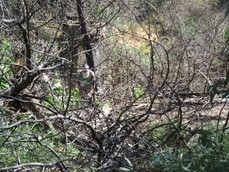







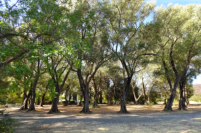






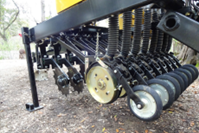


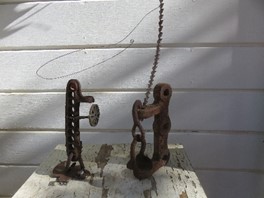




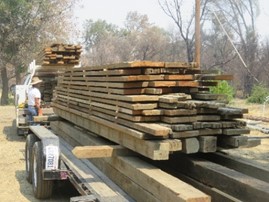
Leave a comment